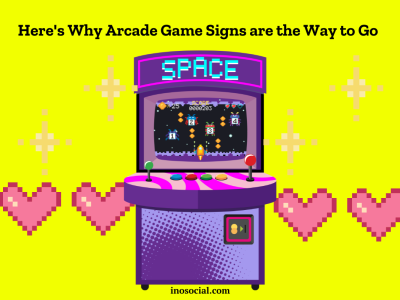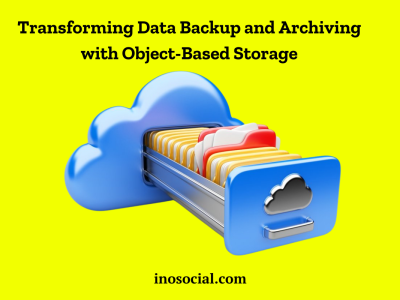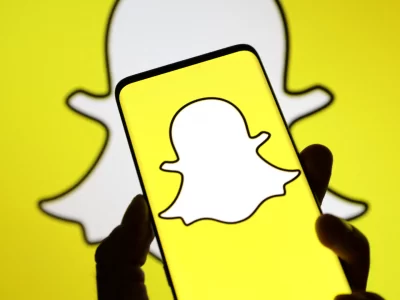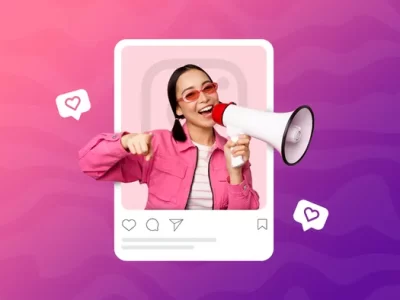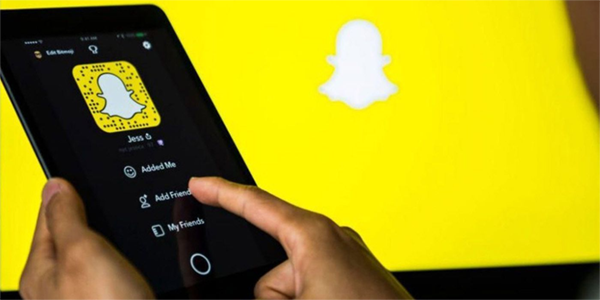If customers do not engage and resonate with your brand, no platform can help you. Especially not social media because the competition for attention is too high. Here, every brand is striving to make a digital footprint and boost its sales funnel. In such a situation, what to do? Well, start with the fundamentals.
Level up your customer engagement game so that not only can you mark your brand presence in the digital world but also make a profit out of it. But before you start proceeding, it’s essential to understand the “hows” and “whys,” which we will emphasize in this blog. We will learn about the benefits of social media in customer engagement and how it can be boosted, along with real-life examples.
So get ready to discover how it’s done!
Understanding Customer Engagement
Customer engagement is more than just a buzzword; it’s about building real connections with your customers and making them fall head over heels for your brand! It refers to customers’ emotional connection and active involvement with a brand, product, or service. Unlike passive interactions, customer engagement goes beyond mere transactions, forging a deeper relationship between the customer and the business.
In fact, at the core of customer engagement lies the concept of reciprocity. When customers feel genuinely valued and involved in a brand’s journey, they are more likely to reciprocate that appreciation through brand loyalty, advocacy, and repeat business. And the more customer engagement, the more positive reviews influence 87% of consumers purchasing decisions.
Thus understanding customer engagement through social media is crucial as it encompasses various touchpoints, both online and offline. In the later sections of the blog, we have explained, along with examples, how understanding the role of social media in customer engagement can be materialized into benefits for your business.
How Does Customer Engagement On Social Media Benefit Businesses?
Oh, customer engagement on social media is like a treasure chest full of benefits for businesses! It’s like the secret sauce that adds that extra zing to your marketing efforts. Let’s break it down:
- Cost-Effective Marketing: Compared to traditional marketing channels, social media engagement is cost-effective and delivers a higher return on investment. This speedy means of engaging with your audience helps you market your brand without even realizing it. In fact, the total spend on social media advertising is projected to reach $268 billion in 2023. This, you can see, is definitely a big bonus! You can reach a large audience with a minimal budget, saving you those advertising dollars.
- Improved Customer Support: According to Sprout SocialIndex™ data, 76% of consumers expect a reply within 24 hours on social. The statistics are valid; most businesses now have advanced customer support on their socials to help customers resolve their concerns. It provides customers a convenient way to contact your business, ask questions and receive support. This helps businesses in improving customer satisfaction and boost loyalty simultaneously.
- Increased Brand Awareness: It is beyond doubt that social media offers businesses a platform not only to engage with customers but also to build to increase their visibility. Social media is that holy grail that exposes your brand to a broader audience. In fact, 81% of organizations use social media to raise brand awareness. Engaging content that resonates with customers can go viral, exposing the brand to new potential customers. As engaged users interact with the brand’s content, it can lead to increased visibility, enhancing brand awareness and recognition.
- Valuable Customer Feedback And Data-Driven Insights: Businesses can get both customer feedback and data-driven insights through socials. How? Through comments, messages, and mentions, businesses gain insights into customer preferences, pain points, and suggestions which is again invaluable for making improvements, launching new products, or fine-tuning marketing strategies. Besides this, by tracking likes, shares, comments, and click-through rates, businesses can also analyze the performance of their content and campaigns to make it better in the future.
- Driving Conversions and Sales: Customer engagement on social media directly impacts conversions and sales for businesses. Engaged customers are more likely to make repeat purchases and become paying customers. When they have positive experiences and interactions with your brand, they’re more inclined to convert and contribute to your bottom line. Hence, by nurturing relationships through engagement, businesses can ultimately drive sales, contributing significantly to revenue growth and long-term success.
In summary, customer engagement on social media is a win-win for businesses. These benefits further take us to the next section of our blog, which proves how socials significantly boost customer engagement.
How Does Social Media Boost Customer Engagement And Satisfaction?
The contribution and influence of social media over the years have become indisputable over the years. Be it any field, or industry, it’s contributing majorly in almost all sectors, but especially more in boosting customer engagement and satisfaction. In fact, businesses only started to have an active social media presence for this reason.
This has not only led to 72.8% of internet users using social media for brand research but also 42.62% of organizations planning to increase their social media budget in 2023.
Since around 44% of internet users aged 16 to 64 use social media as a primary source of information when researching brands, the platform has contributed to increasing customer satisfaction levels and engagement in several ways.
Here are some of the most important ways socials can help you market your brand, even if you are on a strict budget.
- Real-Time Interaction: Social media platforms provide a direct and instant line of communication between businesses and their customers. You can build a rapport with audiences and connect with them on a much more personal level, which is something far-fetched in traditional advertising. Customers through social can now reach out to brands easily, ask questions, provide feedback, or seek support. Brands, in turn, can respond promptly, addressing queries and concerns in real-time, fostering trust and responsiveness.
In fact, 62% of organizations deploy social listening programs to better understand their audiences.
- Engaging With Customers: The biggest benefit of social platforms is that it offers businesses the platform to engage with their audiences. From big brands to small startups, everyone can leverage the same that too for free. But the catch? Yes, there is always one! You need to ensure that your social posts are of high caliber, relevant, and, most importantly, relatable.
Remember, people love exciting and valuable content, and social media is the perfect playground for that! The right content can work wonders for your brand image and not only humanizes your brand but also keep your audience hooked for more.
- Offer Personalization: One of the coolest things about social media is that it lets you get personal with your audience. You can tailor your content to match their interests and preferences, making them feel like you understand them on a deeper level. Personalization enhances the customer experience and makes customers feel valued and understood. In fact, 80% of consumers are more likely to buy from a company that provides a tailored experience.
You can do this by making your followers feel special through special deals and promotions. Because who doesn’t love free stuff? Hosting contests, giveaways and offering your customers a special deal for a limited time will help you win new followers and engage the existing ones as well.
- Improve Communication: One of the most important aspects while discussing the role of social media in customer engagement is, of course, the perks of improved communication. Now what do we mean by that?
Social media can work wonders when it comes to boosting customer engagement, as it gives businesses the platform to offer customer service 24/7. With social media, the rate of responses has become faster. So much so that 53% of customers now expect brands to respond to negative reviews within a week. The platform has helped speed up the communication process both from the customer and the business and has streamlined the concern redressal process as well.
With this open feedback forum, you get to hear what your customers love, what they don’t, and what improvements they suggest.
- Data Insights: Social media platforms offer analytics that let you peek into what works and what doesn’t. You can track engagement metrics like likes, shares, and comments to refine your strategy and keep improving, ensuring they align with customer expectations. Additionally, data helps identify trends, discover new opportunities, and address challenges proactively. Leveraging social media data empowers businesses to make informed decisions, optimize campaigns, and foster stronger customer relationships, ultimately driving growth and success in the competitive digital landscape.
And while being at it, if you want more detailed insight into your brand performance, you can consider looking at some of the Hootsuite alternatives that claims to offer similar services (even better) than Hootsuite to evaluate what each contender brings to the table for your business’s needs and carefully choose the one that caters to them.
While these are some of the essential ways of socials boosting customer engagement, the main gig is about being genuine, approachable, and fun and building relationships to turn customers into enthusiastic promoters of your business.
Examples Of Brands Boosting Customer Engagement
As we have discussed the “hows” in the above paragraph, let’s walk you through the examples of some of the brands that have been actively implementing them to boost their customer and brand engagement.
- Wendy’s
Wendy’s, a fast-food chain, is known for its witty and humorous responses to customers on Twitter. They are the master of social media engagement, which is quite evident if you take a look at their Twitter handle. They engage in playful banter and cleverly respond to mentions and comments, which not only entertains customers but also humanizes the brand and encourages interaction. This makes them stand out from their competitors and garner the attention most brands crave.
Check out Wendy’s recent post on Twitter. In the below image, see how they have leveraged user-generated content creatively, infusing fun and engagement.
- Nike
Nike has a strong presence on social media with an active community passionate about sports and fitness. They actively engage with their audience mainly through Twitter and Instagram and often collaborate with influencers and athletes to promote their products. Besides the inspiring photos, videos, and quotes, Nike’s campaigns, like “Just Do It,” inspire users to share their fitness achievements, using hashtags that generate a sense of community and loyalty among their followers.
Check out this recent Instagram post, where Nike uplifts an athlete and her biggest challenges and talents. This can inspire other followers from the same community and increase engagement.
- Warby Parker
This brand is one of the best examples if we talk about omnichannel customer engagement. Being a D2C eyewear company that operates primarily online, Warby Parker simply nails its online to offline customer engagement through:
- Augmented reality services
- Complimentary try-on service
- Serving customer guides
- Creating consistent brand messaging
This eyewear company has eased the hassle of many customers by offering the above benefits that set them apart from their competitors. With their augmented reality (AR) try-on, customers can virtually test out glasses from the comfort of their own homes and get them delivered for try-on at no additional cost. Besides this, their trigger emails with effective CTAs are the best examples of making a user complete their purchase.
Your Key Takeaway
Social media is much more than just posting random updates and cute cat pictures! And we hope that by the end of this blog, the point we have been trying to emphasize will be quite clear to you. With the relevant statistics, examples, and key takeaways, you can now gauge how social media has become an integral part of brand engagement strategies for businesses over a long period.
However, you must know that social media is never a one-size-fits-all solution. Since different businesses have different requirements, the role of social media will change accordingly. You can rely on the fundamentals we have mentioned. But to have effective solutions, you must be patient and trial and error. So, give it a shot and embrace social media as an essential aspect of your marketing efforts to make it an asset for your business.


